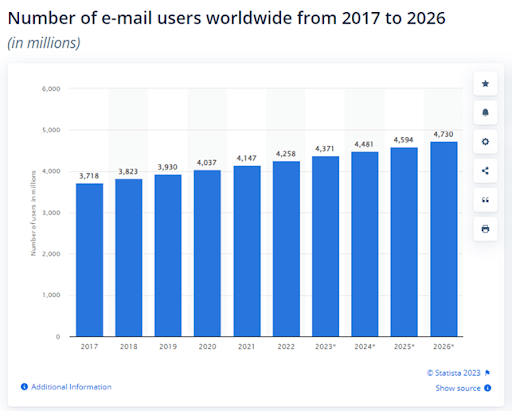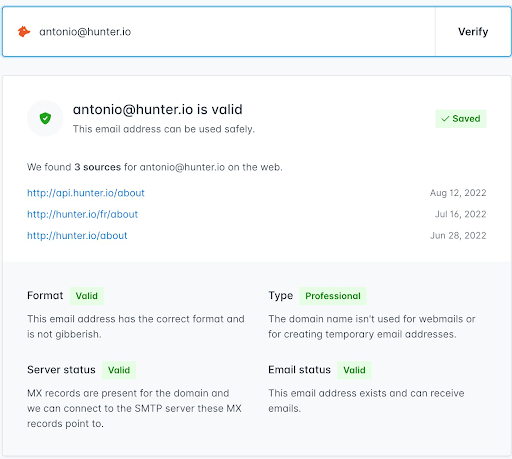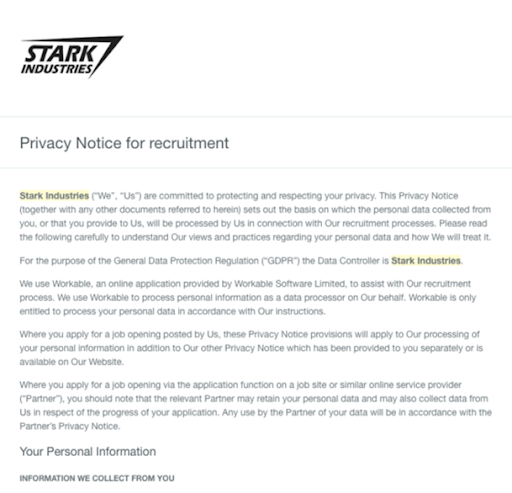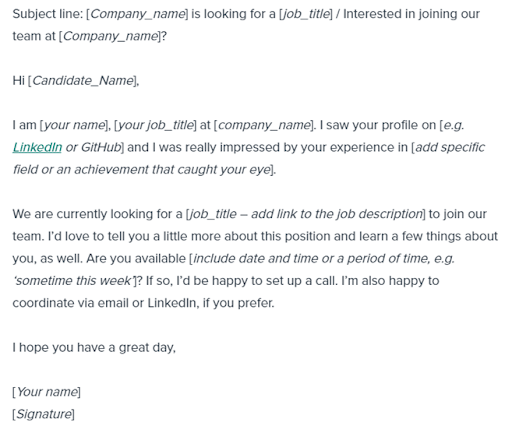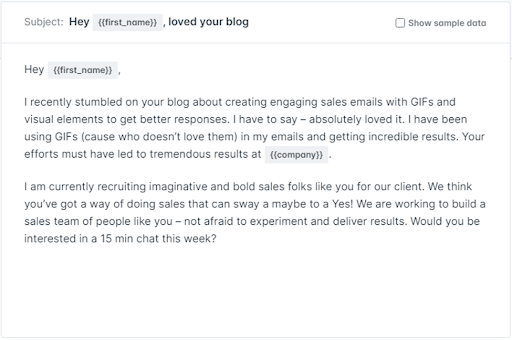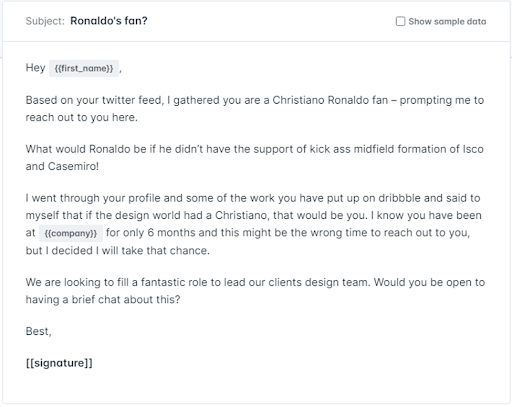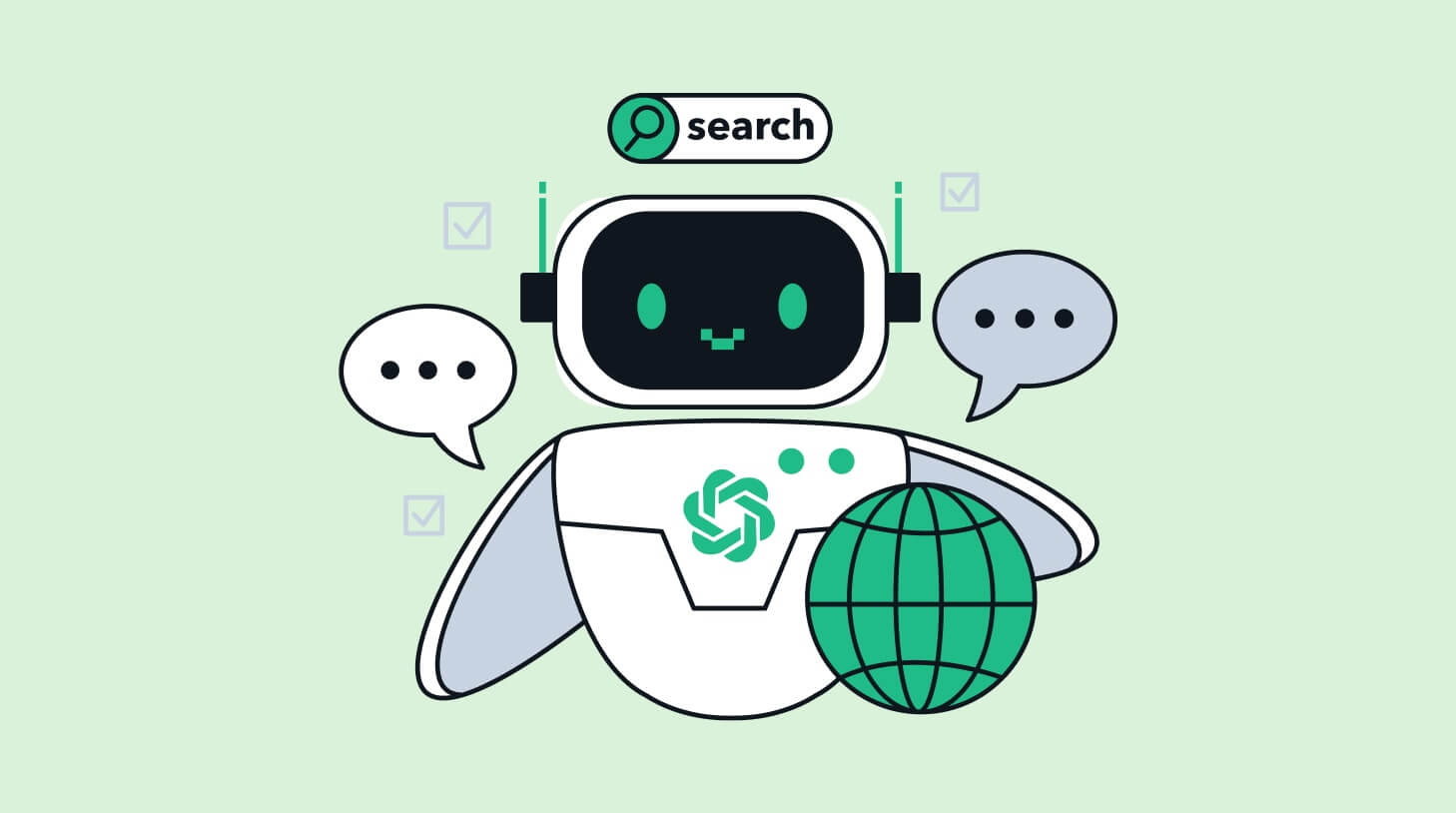No cold calls: engage passive candidates with targeted emails
Pick up strategies to transform your approach to candidate outreach. Learn how personalized cold emails can break through that "spam filter" and ignite interest from passive candidates for your open roles.

Product update – People Search / AI Recruiter is now called Search with AI. Learn more about it here.
Talent crunches are by no means a recent issue for recruiters and HR professionals.
The best candidates often already have positions elsewhere.
For decades, recruiters have sought and wooed these talented candidates who aren’t actively searching for jobs – passive candidates, in other words – through advertisements, cold calls, and bulk emails.
The impersonal nature of spray-and-pray tactics makes them fall flat at conveying and convincing the audience of a job’s value proposition.
Also, the demands that cold calls make on the time and willingness of a candidate to converse with a stranger don’t score them any brownie points either.
So, effective communication with reluctant audiences requires a more direct approach: something that combines the one-on-one nature of cold calls with the scalability of advertisements and email blasts.
The shift from cold calls to emails
Cold calls are incredibly time-consuming. The time taken to research each candidate, then connect with them and successfully carry out a conversation can drain recruiters of their already limited resources.
Besides requiring both the caller and the recipient to be available to talk at the same time, the rise in the number of automated calls and phishing scams has made people more wary than ever of answering a call from an unknown number.
In comparison, there’s been a marked shift towards using digital communication over more traditional means like phone calls, not solely due to the rise in the number of email users to 4.37 billion in 2023.
The importance of targeted emails
The accessibility of emails makes them the preferred means of receiving business communication worldwide, especially when compared to cold calls, which are perceived as more pushy and invasive.
Cold emails can also be personalized much more easily than cold calls. They’re cheaper to send, and scalable, which makes them a lucrative alternative, provided of course, that they’re relevant.
By tailoring the email to the candidate’s specific skills and experience, recruiters can increase the chances of getting the candidate’s attention and interest.
Targeted emails are also handy for relationship-building if the candidate is not interested in the current position but may be interested in a future opportunity.
The challenges of cold emails
On the flip side, most cold emails are heavily templatized and don’t factor in the importance of personalization in engaging and making a good first impression on candidates.
Plus, they’re easier to ignore than phone calls – if they ever make it past spam filters to land in an actual inbox, that is.
Even if cold emails manage to jump through all these hoops of fire to actually be read, they’re still, for lack of a better word, cold.
The same advantages that emails have over cold calling, in that they’re easier to send and less intrusive to receive, make them susceptible to lacking a personal touch and being easier to dismiss.
Cold emails might be unexpected, but they don’t have to be unwelcome. In this article, we show you how to write cold recruitment emails for passive candidates that get placed in inboxes, read, and replied to favorably.
Strategies for crafting effective targeted emails
Here’s how recruiters can make their cold emails highly targeted and bag the candidates of their dreams.
1. Find and verify contact details
The first step to ensuring the success of modern recruitment outreach is knowing where to send your emails.
Since you’re contacting them about a potential job offer, using a candidate’s work email address would be a major faux pas.
You can either find it on their website or LinkedIn profile, or use Workable’s sourcing features to quickly generate a comprehensive list of potential candidates and their email addresses.
Run these addresses through an email checker to boost deliverability and eliminate bounces.
In case you can’t find a valid email address, craft a direct message on the social media they are most active (preferably LinkedIn). If you are not connected with potential candidates, InMail on LinkedIn works well, but ensure you add a hyper-personalized touch to your messages.
2. Customize your message
When you use Workable’s AI Recruiter to find potential candidates, you’re presented with more than just candidate skills. You have access to their resumes, portfolios, and social media profiles.
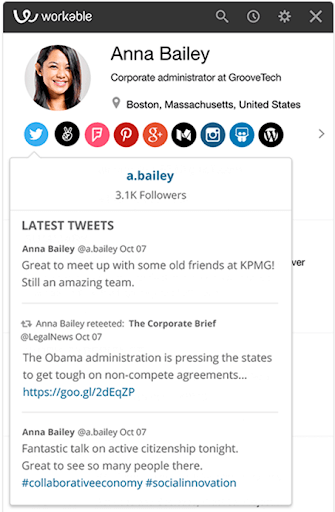
Use these to personalize the subject line and body of recruitment emails to passive candidates.
For example, if their profile picture on Twitter depicts them wearing a Dodgers jersey, your subject line could say, “We’re cheering for the Dodgers, and you, {first_name}!”
If they’ve recently tweeted about an industry event, acknowledge their opinion and express your agreement and/or admiration for their take.
If they’ve delivered a keynote address, congratulate them for it. Or you could mention their alma mater or their designation to make the email feel more personal.
The rest of the template should also be peppered with little details that show they’re not just another name on a crowded list for you.
3. Write content that captures interest
The content of your recruitment cold emails has one overarching objective: to establish employment brand identity and then reinforce the same values in all your emails.
Do you provide a fun, friendly environment to work in with a flat hierarchy? Are you driven by a particular social cause that aligns with their values? Do you have high ratings on Glassdoor?
Highlight the biggest draws of the position – an exciting niche or industry, big-name investors, recent company growth, remote work, etc.
Don’t hesitate to use a little flattery to increase the feel-good value of your emails.
Keep your email body short and readable. Include only the most pertinent information, and try to steer clear of jargon and chunky paragraphs.
If you’re creating an email sequence, you can keep candidates engaged by doing a survey on their short-term and long-term career goals, and sending them case studies, white papers, and industry news about their niche.
4. Craft compelling calls to action
Don’t let all the hard work you’ve put into making a positive first impression go to waste by leaving them hanging at the end of your email. Give them specific next steps to take if they’re interested in your offer.
Do you want them to call you? If so, have you provided them with a link to your calendar? That’ll save you both a lot of back and forth.
Whether you want them to send you their resume, connect on LinkedIn, read the detailed job description, or fill up a form, state it in clear terms. Provide links wherever needed.
Having a single, low-effort CTA keeps the conversation going without making the candidate feel imposed upon.
5. Master the art of the follow-up
Wooing passive candidates is more likely to involve additional nurturing. If they haven’t replied to your first email, you’ll want to send them a few follow-up emails before you give up on them entirely.
The problem with follow-up emails is that short of some internet badgering or groveling (depending on the sender’s style), they consist of little else.
To avoid that, create a drip sequence that you can easily automate using cold email software without losing the personal touch.
Ask them if they’ve had the time to consider your proposal and linking to a readable resource such as:
- A job description
- Employee reviews
- Related product launches
This gives them an idea of what to expect if they decide to work with your organization.
You can update them on company news about recent investments, accomplishments, or initiatives.
In your last email, let them know you won’t be reaching out anymore. And as a way of keeping one foot in the door, you can ask if they’d like to refer someone else for the role, or continue to receive company updates via a newsletter.
Best practices for using targeted emails in recruitment
Modern recruitment can be made effective by relying on the following techniques to win over reluctant job candidates.
1. Segment your audience
If you’re using Workable’s candidate sourcing tools to come up with a list of preferred candidates for each job profile, you can export that list and segment them according to their skills, location, job experience, educational qualifications, current designation, organization, etc.
The more you segment your audience into distinct categories, the clearer their persona becomes.
With a well-defined persona, it becomes easier to create a message that catches their eye and keeps them engaged and interested.
For example, you can use their location in the subject line to improve open rates.
Or, if you’re looking for a web developer, join a few professional groups on LinkedIn and tap into industry discourse to have them sit up and take notice of your email.

By using different markers to customize emails for each candidate, you can seamlessly transition from building awareness to getting them to consider your offer.
2. Utilize A/B testing
Email design is a laborious process and involves relentless deliberation about the best subject line, opener, image, and CTA.
Unless you can afford to wait until the end of a campaign to find out what worked and what didn’t, an A/B test offers a stop-gap arrangement to eliminate confusion and maximize email opens and clicks.

It allows you to compare different elements of an email with each other by sending two versions of the same email to a small subset of your audience.
The winner of the two is sent to the rest of your candidates.
3. Harness the power of analytics
One of the most significant advantages of using emails to recruit passive candidates is the scope for data mining.
You can learn:
- Who has opened your emails
- How much time they’ve spent reading them
- Which links they’ve clicked on
- Whether they’ve responded to any of them
- Which emails received unsubscribe requests
And a lot more.
Analyzing this data allows you to understand the persona of the people you’re pursuing, and by extension, their likes, dislikes, interests, and motivators.
You can then refocus efforts on candidates who show more openness in being recruited and scrap emails or campaigns that aren’t getting results.
3. Ensure compliance
In recent years, there’s been a crackdown on the injudicious use of cold emails that invade people’s privacy and market irrelevant products and services to them.
Both the GDPR in the EU and the CAN-SPAM in the US aim to prohibit irrelevant unsolicited emails and regulate the relevant ones.
To ensure compliance with data privacy protection laws:
- Research the recipient’s background to ensure that the job you’re offering them is relevant to their field of expertise.
- Implement single or double opt-in to seek permission before adding someone to your email list.
- Include an unsubscribe button in every one of your emails.
Workable is ISO, GDPR, and CCPA-compliant and includes a privacy notice by default in the first cold email you send to source a passive candidate.
For instance, if you haven’t been able to establish contact with them for over a month, their data automatically gets deleted from the database to ensure legal compliance.
Successful examples of targeted email in recruitment
Example 1: the classic pitch
This template gets it all right with its:
- Personalized subject line
- Simple introduction
- Personalized compliment
- To-the-point statement of purpose
- Unambiguous CTA
It’s simple, yet effective, as it hits the right notes of personalization combined with conciseness.
Example 2: the personalized opener template
This template takes the top-down approach to personalizing the email. So much so that after a heavily personalized first half, it gets away with using a static second paragraph for every single candidate.
It starts off strong with the candidate’s name in the subject line to get their attention, then impresses them with the recruiter’s detailed compliment about their work and the mention of their current organization.
It’s great at forging a genuine connection with a candidate and warming them up to the potential of a sustained relationship.
Example 3: the ardent admirer template
This one is so heavily customized it leaves no doubt in the mind of the passive candidate that it was written solely keeping them in mind.
It clearly follows the principle of ‘When in doubt, flatter.’ It uses high praise to win the favor of the candidate, and whether or not they’re in a position to accept the offer, they’ll be certain to see the recruiter and their organization in a positive light.
If you have a set of candidates that are especially important, you can single them out and find out a sports personality, an artist, or an industry leader they admire by combing through their social media profiles and then proceeding to establish a parallel.
Wrapping up
By using these tips and templates, recruiters can connect with and nurture passive candidate leads for their organization.
Just remember to:
Do your research and make sure you are targeting the right candidates.
- Tailor the email to the candidate’s specific skills and experience.
- Highlight the benefits of the position and why the candidate would be a good fit.
- Keep the email concise and end with a call to action.
- Follow up with candidates who don’t respond immediately.
- Use data analytics to strengthen future recruitment efforts.
When you successfully demonstrate to a potential candidate that your job opening and organizational ethos align with their values, aspirations, and career trajectory, you stand an excellent chance of attracting top-tier talent even if you’re a small business facing off against bigger corporations.
HR and hiring solutions like Workable can do the heavy lifting for you while you focus on nurturing relationships with star candidates that promise to help your organization scale new heights.
Antonio Gabrić is an outreach manager at Hunter. He is passionate about testing different outreach tactics and sharing results with the community. When he is not connecting with industry leaders you can find him on his motorbike exploring off-the-beaten paths around the world.
